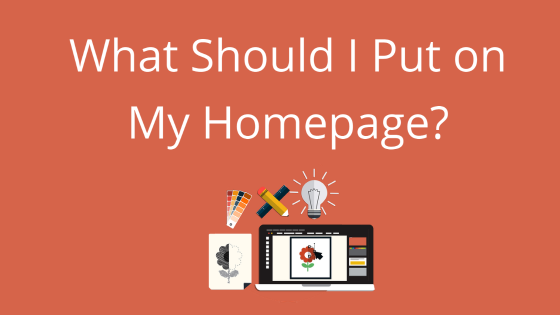Planning Your Homepage: Why It’s Important
When building a website, it’s tempting to dive directly into the building phase. However, there’s an important step before you start building: the page planning phase. This phase helps you develop goals and strategies to help visitors interact with your site, which can help boost your site’s user experience and marketing stats.
The homepage is an important page to a site. It’s one of the main pages and will likely receive the most visits from new and returning visitors.So if you want to give your website its best chance at success, you should invest time in page-planning.
This blog will help you form your goals and recognize what website elements are often used with a homepage.
Not looking to design a homepage? Check out our other page planning guides:
Defining Characteristics of a Homepage
Like all pages, a homepage has a few defining characteristics. We’ll be explaining those characteristics below so you understand what a homepage needs, what its goals are, etc.
Main Introduction Page
The homepage is your website’s main page. It’s the one visitors land on when they visit your domain. For example, Pair Networks’s homepage can be found at pair.com.
One of the homepage’s main goals is to introduce people to your website. If you sell products, your homepage may showcase your products prominently. If you host a podcast, your homepage may indicate what genre or podcasts you host.
Think of your homepage as an introduction to your website. It should give visitors the basics information about why your site exists, why they should take the time to explore your website, etc.
So, to return to our example above, if you visit our pair homepage, you’ll see that you can tell what we do right from the get-go: web hosting. Likewise, you want your homepage to give visitors a clear picture of your site’s purpose.
A Place Visitors Return To
While a good homepage should orient first-time visitors to your site’s purpose, it should also have something to offer returning visitors. If people revisit your site, they will likely land on the homepage. The homepage functions as a sort of hub for information. While stating your site’s purpose for new visitors is important, that shouldn’t be the only goal of your homepage. Make sure you include use for returning visitors as well. This usefulness could be information about new updates or promotions. Or it could be links to helpful, often visited places around your site (such as login screens).
Site Navigational Hub
Because the homepage is the main landing point for all visitors, it’s often necessary to build navigational elements into it. This is because your homepage is often used as the gateway to the rest of your site. Since people land on this page when they search for your domain, it’s best to include navigation items that will speed up their site journey.
With a clear navigation system, your homepage can aid the visitor. Plus, making the homepage a navigational hub will bring people back to the homepage over and over. This is especially compelling if you’ve chosen to showcase promotions or products on your homepage.
What Every Homepage Needs
In this section, we’re going to talk about common site elements that are used on a homepage. However, it’s important to keep in mind that website design is subjective. That means that there are differing opinions out there about how a homepage should be designed. And that’s okay! That’s what helps spark creative design advances.
That being said, we’ve compiled a list of site elements that are often used on popular homepages (and some we use ourselves!). Using these, you have a good chance of creating a strong homepage.
Navigation System
We talked earlier about navigation being one of the main characteristics of a homepage. So it makes sense that a solid navigation system is usually considered a homepage must-have. Since your homepage is where both new and returning visitors often land, having a navigation system in place can work wonders if you want to keep visitors on your site.
If you leave out a navigation system or don’t take the time to optimize it, your visitors will be at a loss. Navigation bars are normally the navigation option of choice for homepages. They’re commonly located at the top of your site, in the footer, on the sidebar, or a combination of the three.
Your site’s goal will also play a role in how you set up your navigation. If you’re running a membership site, you may want to limit the navigation to a few items that funnel members through the sign-in process. That way, your members will sign in and then be able to access all of their membership items.
On the other hand, if your site is designed to sell products, you may want to create navigation that best showcases the categories your products fall under.
And you’re not limited to just one navigation type! You can create different navigation for different locations, etc. For example, if we return to the membership site example, you may want to have a different navigation for logged in members and logged out members.
Logo
Another thing you often want to prominently display on your homepage is your logo. Having a logo can not only help with branding, but it can also give your business a healthy dose of creative flavor.
Displaying your logo prominently on your website helps visitors immediately identify your business. If they’ve discovered your site through a targeted ad or social media that used your logo, then they’ll see the logo on your homepage and immediately know they’re in the right place.
Headline Message
A headline message is a leading phrase or sentence that stands out on your homepage. It’s used to immediately inform your visitors about your site’s purpose. For example, if you visit our Pair Networks homepage, you’ll see that our headline message immediately shares important information about what we do and our goals.
A well-worded, well-placed headline message can give visitors valuable insight into your business.
Calls-to-Action
We talked about calls-to-action in our blog, What Should I Put on My Welcome Page, but it bears repeating. Calls-to-action are phrases or words that inspire the readers to take a certain action.
For example, it might be a button that says, “Sign Up Today!” or a link that reads, “Get Your XYZ Product Before We Run Out!” In both cases, they inspire a sense of urgency and make people want to move to the next step.
So why should you include calls-to-action on your homepage? Well, they are an effective tool for guiding website traffic.
Let’s say that someone is visiting your site to log in. But when they land on the homepage, they see a blurb about a new product and a call-to-action that says, “Learn More.” They are intrigued, so they click the call-to-action to visit the product page and learn about your new product.
By using a combination of calls-to-action and compelling text and images, you can draw site visitors to parts of your site that they might not have intended to visit. You can use calls-to-action to maximize your homepage’s marketing and user experience.
“Above the Fold” Optimization
Your homepage is essentially the landing page of your website. So it makes sense that you’d want to do everything possible to retain visitors. One of the ways you can maximize your visitor retention is by optimizing your “above the fold” content.
“Above the Fold” refers to the top of your homepage that is immediately visible when landing on the site. The term comes from the era when news was circulated through physical newspapers. Newspaper companies found that if they placed their biggest, juiciest headline on the front of the newspaper (and, consequently, above the fold of the newspaper), more passersby would see the headline and buy the newspaper.
While newspapers aren’t all physical anymore, the above the fold method still holds true for websites. If you place your most interesting, noteworthy information in an aesthetically pleasing way on the “above the fold” portion of your site, you have a better chance of enticing people to take a longer look at your site.
If you want some good examples of websites that implement this method, check out optinmonster’s blog post.
Build Your Homepage
These site goals and elements are a great place to start when designing a homepage. If you’re currently in the planning phases, but don’t haven’t yet decided on a CMS or website builder, we recommend checking out:
They’re great site builder options for both new web designers and design veterans.
If you’re planning on building more pages and would like more guidance, check out our blog series on building webpages:
Stay tuned! We’ll be releasing more articles in this series in the coming weeks.




